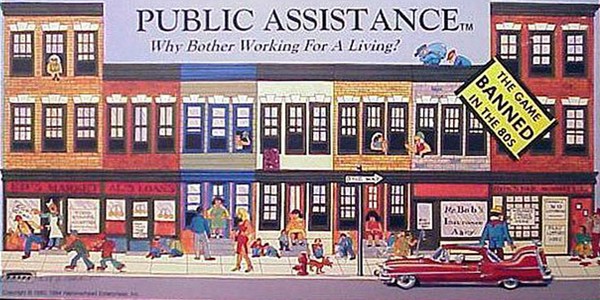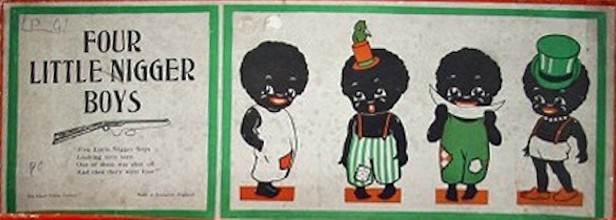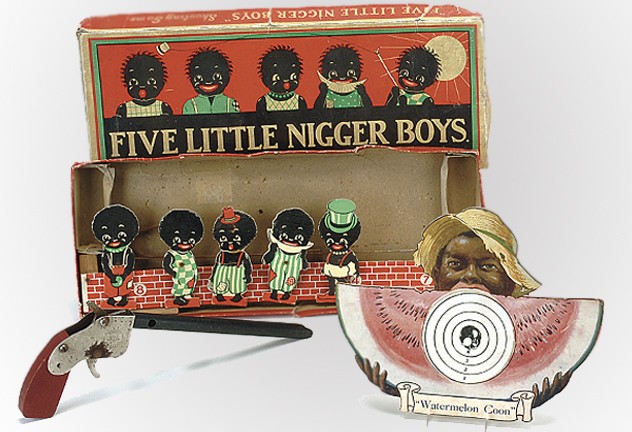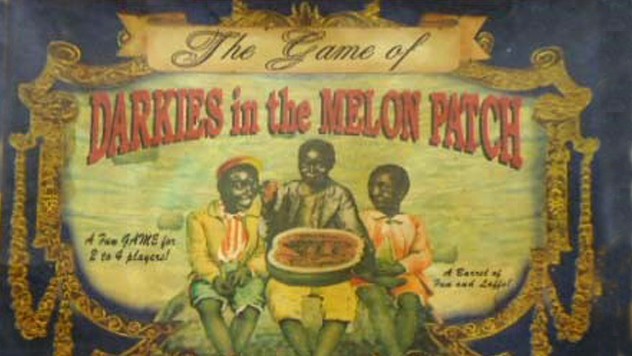Remember the good old days of playing your favorite board game on family night? I have many positive memories. Unfortunately, some companies thought it would be entertaining to produce truly offensive board games that reflect racist stereotypes. These games perpetuate negative images of Black people in society. Sambo, Mammy, Ghetto, Projects, Welfare and Nigger are words used in association with these games.
Black & Whites
In 1970, Psychology Today published a board game where players choose to either be “Black” or a “white,” and their choice handily determines who wins the game. The game tries to emphasize, “the absurdities of living in different worlds while playing on the same board.” The whites, who comprised the majority of players, started with $1 million and can buy property anywhere on the board. Their Black counterparts are the minority, start the game with only $10,000 and can’t buy many properties.
The property clusters had outrageous names such as “inner ghetto” and “outer ghetto” to “lower integrated” and “upper integrated,” and “newer estates” and “older estates.” The “Blacks” and “whites” each draw from their own set of “opportunity cards.” A typical Black card: “Government begins urban-renewal project. You lose both Harlem and Watts. Collect full price less 10% from Treasury.”
Pubic Assistance
The Public Assistance board game had a notorious tagline “Why bother working for a living?” The idea behind the game is to have players pursue two paths, either the “working person’s rut” or “able-bodied welfare recipient’s promenade,” and see who can get ahead first via government welfare payouts or paydays. The player with the most money after taxes wins….REALLY!!!
Life As A Black Man
This Underground Games release from 1999 offered a simple yet heavy message: Life as a Black man is hard. Delivering this message pretty much involved trotting out a parade of stereotypes, blurring the lines between satire and genuine racism. Each player starts the game as a black 18-year-old high-school graduate. Players must make moral choices throughout the game, and may find themselves in Black University, the ghetto, the military, or “Glamourwood.” The first player to reach the “freedom” space at the top of the board wins the game.
Ghettopoly
“Ghettopoly” is the most recent board game on this list and another failed attempt at parody. Some of the elements of the game includes buying stolen properties, building a crack house and projects, paying protection fees, and getting carjacked. Players can also receive points for selling “a couple chunks of soap to a stupid high school student thinking it’s crack,” according to the description. One game card reads, “You got yo whole neighborhood addicted to crack. Collect $50.”
Four Little Nigger Boys
This 1950 release from Britain is a target shooting game. The game was originally created as Four Little Nigger Boys, I guess for some having one more “Nigger” in the bunch was a good thing. Players are equipped with a rubber-band gun to shoot down five Black figurines eating watermelon. The first player to shoot down a predetermined amount of pieces wins the game.
Darkies In The Melon Patch
The objective of Darkies in the Melon Patch is to escape a patch of melons. Angry farmers and bearded grandmothers act as threats. The path also offers some tempting distractions, such as melon races and seed-spitting contests. This game had a second edition produced in 1930.
Little Black Sambo
Little Black Sambo, a sort of jungle child, gets chased around by tigers and stuff and once upon a time kids thought this was fun. *Hangs head in despair.*














2 Comments
The “Blacks & Whites” thing seems less like a racist board game, and more like a board game that is supposed to be a commentary on racism in today’s society.
I was asked what is the danger of sharing this type of history. and I replied by saying we might realize that racism has deep roots in our society and its influence has infected every aspect of our consciousness, even when we’re vigorously exposing the harm it’s done. RACISM IS NOT A GAME TO BE PLAYED BUT AND INSTITUTION THAT NEEDS TO BE IRASICATED